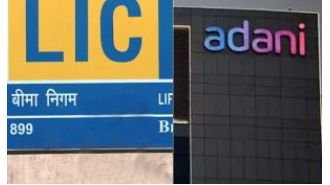Stay on the bus
I came across this passage from a commencement speech by Finnish American photographer Arno Minkkinen.
There is a bus station in Helsinki I want to introduce you to, a bus station just next to Eliel Saarinen’s famous train station. Surrounded by Jugenstil architectural gems like the National Theater and the National Art Museum, the bus station makes a cool backdrop for Magnum wannabees armed with D-SLRs and vintage Leica’s.
You might find yourself there sometime, too.
But getting back to the bus station and what makes it famous, at least among the students I teach at UMass Lowell, the University of Art & Design Helsinki, École d’Art Appliqués in Lausanne, or the many workshops I give in Tuscany, Maine and Santa Fe, is the metaphor it offers students and professionals alike for creative continuity in a life-long journey in photography, the metaphor it provides to young artists seeking to discover their own unique vision one day.
The Helsinki Bus Station: let me describe what happens there.
Some two-dozen platforms are laid out in a square at the heart of the city. At the head of each platform is a sign posting the numbers of the buses that leave from that particular platform. The bus numbers might read as follows: 21, 71, 58, 33, and 19.
Each bus takes the same route out of the city for a least a kilometer stopping at bus stop intervals along the way where the same numbers are again repeated: 21, 71, 58, 33, and 19.
Now let’s say, again metaphorically speaking, that each bus stop represents one year in the life of a photographer, meaning the third bus stop would represent three years of photographic activity.
Ok, so you have been working for three years making platinum studies of nudes. Call it bus #21.
You take those three years of work on the nude to the Museum of Fine Arts Boston and the curator asks if you are familiar with the nudes of Irving Penn. His bus, 71, was on the same line. Or you take them to a gallery in Paris and are reminded to check out Bill Brandt, bus 58, and so on.
Shocked, you realize that what you have been doing for three years others have already done.
So you hop off the bus, grab a cab (because life is short) and head straight back to the bus station looking for another platform.
This time you are going to make 8×10 view camera color snapshots of people lying on the beach from a cherry picker crane.
You spend three years at it and three grand and produce a series of works that elicit the same comment: haven’t you seen the work of Richard Misrach? Or, if they are steamy black and white 8×10 camera view of palm trees swaying off a beachfront, haven’t you seen the work of Sally Mann?
So once again, you get off the bus, grab the cab, race back and find a new platform. This goes on all your creative life, always showing new work, always being compared to others.
What to do?
It’s simple. Stay on the bus. Stay on the f*cking bus.
Why, because if you do, in time you will begin to see a difference.
The buses that move out of Helsinki stay on the same line but only for a while, maybe a kilometer or two. Then they begin to separate, each number heading off to its own unique destination. Bus 33 suddenly goes north, bus 19 southwest.
For a time maybe 21 and 71 dovetail one another but soon they split off as well, Irving Penn is headed elsewhere.
It’s the separation that makes all the difference, and once you start to see that difference in your work from the work you so admire (that’s why you chose that platform after all), it’s time to look for your breakthrough.
Suddenly your work starts to get noticed. Now you are working more on your own, making more of the difference between your work and what influenced it.
Your vision takes off.
And as the years mount up and your work takes begins to pile up, it won’t be long before the critics become very intrigued, not just by what separates your work from a Sally Mann or a Ralph Gibson, but by what you did when you first got started!
You regain the whole bus route in fact. The vintage prints made in twenty years ago are suddenly re-evaluated, and for what it is worth, start selling at a premium.
At the end of the line—where the bus comes to rest and the driver can get out for a smoke or better yet a cup of coffee—that’s when the work is done. It could be the end of your career as an artist or the end of your life for that matter, but your total output is now all there before you, the early (so-called) imitations, the breakthroughs, the peaks and valleys, the closing masterpieces, all with the stamp of your unique vision.
Why, because you stayed on the bus.
It resonated.






